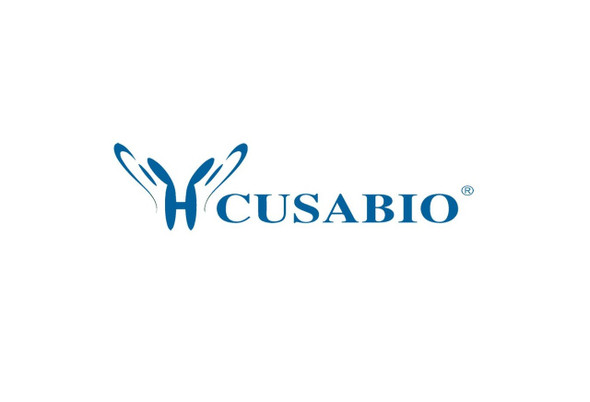Cusabio Human Recombinants
Recombinant Human Gasdermin-D (GSDMD) | CSB-EP009956HU
- SKU:
- CSB-EP009956HU
- Availability:
- 3 - 7 Working Days
Description
Recombinant Human Gasdermin-D (GSDMD) | CSB-EP009956HU | Cusabio
Alternative Name(s): Gasdermin-D(Gasdermin domain-containing protein 1) [Cleaved into: Gasdermin-D, N-terminal(GSDMD-NT)(hGSDMD-NTD); Gasdermin-D, C-terminal(GSDMD-CT)(hGSDMD-CTD)]
Gene Names: GSDMD
Research Areas: Cell Biology
Organism: Homo sapiens (Human)
AA Sequence: MGSAFERVVRRVVQELDHGGEFIPVTSLQSSTGFQPYCLVVRKPSSSWFWKPRYKCVNLSIKDILEPDAAEPDVQRGRSFHFYDAMDGQIQGSVELAAPGQAKIAGGAAVSDSSSTSMNVYSLSVDPNTWQTLLHERHLRQPEHKVLQQLRSRGDNVYVVTEVLQTQKEVEVTRTHKREGSGRFSLPGATCLQGEGQGHLSQKKTVTIPSGSTLAFRVAQLVIDSDLDVLLFPDKKQRTFQPPATGHKRSTSEGAWPQLPSGLSMMRCLHNFLTDGVPAEGAFTEDFQGLRAEVETISKELELLDRELCQLLLEGLEGVLRDQLALRALEEALEQGQSLGPVEPLDGPAGAVLECLVLSSGMLVPELAIPVVYLLGALTMLSETQHKLLAEALESQTLLGPLELVGSLLEQSAPWQERSTMSLPPGLLGNSWGEGAPAWVLLDECGLELGEDTPHVCWEPQAQGRMCALYASLALLSGLSQEPH
Source: E.coli
Tag Info: N-terminal 6xHis-tagged
Expression Region: 1-484aa
Sequence Info: Full Length
MW: 56.9 kDa
Purity: Greater than 85% as determined by SDS-PAGE.
Relevance: [Gasdermin-D]: Precursor of a pore-forming protein that plays a key role in host defense against pathogen infection and danger signals (PubMed:26375003, PubMed:26375259, PubMed:27281216). This form constitutes the precursor of the pore-forming protein: upon cleavage, the released N-terminal moiety (Gasdermin-D, N-terminal) binds to membranes and forms pores, triggering pyroptosis (PubMed:26375003, PubMed:26375259, PubMed:27281216).; [Gasdermin-D, N-terminal]: Promotes pyroptosis in response to microbial infection and danger signals (PubMed:26375003, PubMed:26375259, PubMed:27418190, PubMed:28392147, PubMed:32820063). Produced by the cleavage of gasdermin-D by inflammatory caspases CASP1, CASP4 or CASP5 in response to canonical, as well as non-canonical (such as cytosolic LPS) inflammasome activators (PubMed:26375003, PubMed:26375259, PubMed:27418190). After cleavage, moves to the plasma membrane where it strongly binds to inner leaflet lipids, including monophosphorylated phosphatidylinositols, such as phosphatidylinositol 4-phosphate, bisphosphorylated phosphatidylinositols, such as phosphatidylinositol (4,5)-bisphosphate, as well as phosphatidylinositol (3,4,5)-bisphosphate, and more weakly to phosphatidic acid and phosphatidylserine (PubMed:27281216, PubMed:29898893). Homooligomerizes within the membrane and forms pores of 10-15 nanometers (nm) of inner diameter, allowing the release of mature IL1B and triggering pyroptosis (PubMed:27418190, PubMed:27281216, PubMed:29898893). Exhibits bactericidal activity (PubMed:27281216). Gasdermin-D, N-terminal released from pyroptotic cells into the extracellular milieu rapidly binds to and kills both Gram-negative and Gram-positive bacteria, without harming neighboring mammalian cells, as it does not disrupt the plasma membrane from the outside due to lipid-binding specificity (PubMed:27281216). Under cell culture conditions, also active against intracellular bacteria, such as Listeria monocytogenes (By similarity). Also active in response to MAP3K7/TAK1 inactivation by Yersinia toxin YopJ, which triggers cleavage by CASP8 and subsequent activation (By similarity). Strongly binds to bacterial and mitochondrial lipids, including cardiolipin (PubMed:27281216). Does not bind to unphosphorylated phosphatidylinositol, phosphatidylethanolamine nor phosphatidylcholine (PubMed:27281216).
Reference: "Succination inactivates gasdermin D and blocks pyroptosis." Humphries F., Shmuel-Galia L., Ketelut-Carneiro N., Li S., Wang B., Nemmara V.V., Wilson R., Jiang Z., Khalighinejad F., Muneeruddin K., Shaffer S.A., Dutta R., Ionete C., Pesiridis S., Yang S., Thompson P.R., Fitzgerald K.A. Science 0:0-0(2020)
Storage: The shelf life is related to many factors, storage state, buffer ingredients, storage temperature and the stability of the protein itself. Generally, the shelf life of liquid form is 6 months at -20?/-80?. The shelf life of lyophilized form is 12 months at -20?/-80?.
Notes: Repeated freezing and thawing is not recommended. Store working aliquots at 4? for up to one week.
Function:
Involvement in disease:
Subcellular Location:
Protein Families:
Tissue Specificity:
Paythway:
Form: Liquid or Lyophilized powder
Buffer: If the delivery form is liquid, the default storage buffer is Tris/PBS-based buffer, 5%-50% glycerol. If the delivery form is lyophilized powder, the buffer before lyophilization is Tris/PBS-based buffer, 6% Trehalose, pH 8.0.
Reconstitution: We recommend that this vial be briefly centrifuged prior to opening to bring the contents to the bottom. Please reconstitute protein in deionized sterile water to a concentration of 0.1-1.0 mg/mL.We recommend to add 5-50% of glycerol (final concentration) and aliquot for long-term storage at -20?/-80?. Our default final concentration of glycerol is 50%. Customers could use it as reference.
Uniprot ID: P57764
HGNC Database Link: N/A
UniGene Database Link: N/A
KEGG Database Link: N/A
STRING Database Link: N/A
OMIM Database Link: N/A






